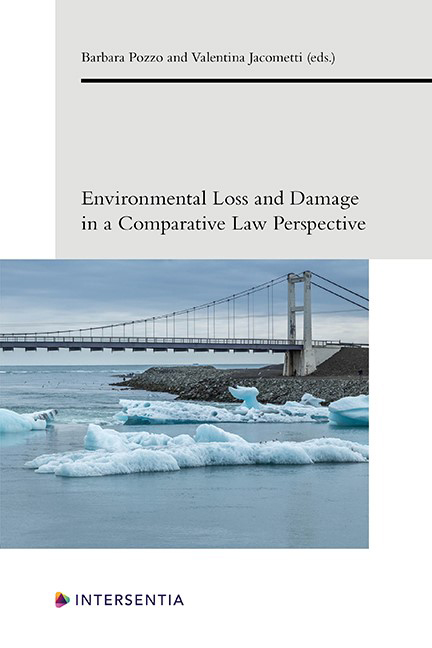Book contents
- Frontmatter
- Preface
- Contents
- List of Authors
- PART I LIABILITY FOR ENVIRONMENTAL HARM IN THE EU
- PART II PRIVATE AND CORPORATE ENVIRONMENTAL LIABILITY
- PART III THE ROLE OF CRIMINAL LIABILITY
- PART IV LEGAL TRANSPLANTS IN THE ENVIRONMENTAL FIELD: THE CASE OF ENVIRONMENTAL LIABILITY
- PART V STATE AND INTERNATIONAL ENVIRONMENTAL LIABILITY
- PART VI CLIMATE CHANGE LIABILITY
- PART VII LIABILITY, CLIMATE CHANGE AND NATURAL HAZARDS: THE ROLE OF INSURANCE
- PART VIII REAL COMPENSATION AND OFFSET REGIMES: THE STRATEGY OF “NO NET LOSS”
- About the Editors
“Causal Link” as a Condition of Liability in the Environmental Law: The Example of the Liability Mechanism in Directive 2004/35/EC
Published online by Cambridge University Press: 26 May 2021
- Frontmatter
- Preface
- Contents
- List of Authors
- PART I LIABILITY FOR ENVIRONMENTAL HARM IN THE EU
- PART II PRIVATE AND CORPORATE ENVIRONMENTAL LIABILITY
- PART III THE ROLE OF CRIMINAL LIABILITY
- PART IV LEGAL TRANSPLANTS IN THE ENVIRONMENTAL FIELD: THE CASE OF ENVIRONMENTAL LIABILITY
- PART V STATE AND INTERNATIONAL ENVIRONMENTAL LIABILITY
- PART VI CLIMATE CHANGE LIABILITY
- PART VII LIABILITY, CLIMATE CHANGE AND NATURAL HAZARDS: THE ROLE OF INSURANCE
- PART VIII REAL COMPENSATION AND OFFSET REGIMES: THE STRATEGY OF “NO NET LOSS”
- About the Editors
Summary
INTRODUCTION
In accordance with the classic principles of legal liability understood as “a situation in which a given entity bears the negative consequences specified by law for an event or a state of things that is normatively qualified as negative and attributed in law to a specific entity in a given legal order”, it is necessary to determine whether there exists a causal link between the act (action/omission) and the damage to the environment.
In the context of the liability mechanism introduced by Directive 2004/35/ EC on environmental liability with regard to the prevention and remedying of environmental damage, the question arises whether establishing a causal link is always a sine qua non condition in determining a given business operator's liability.
The aforementioned assumption requires verification through analysis of the case law of the Court of Justice of the European Union (CJEU), especially regarding the interpretation of Directive 2004/35. Should only those operators who have contributed to the emergence of damage be held liable, or are the parties that own land in a given area or conduct their business operations there also be considered potentially liable? This is the question that the author has set out to answer.
Before we move any further, we need to have a look at the case law of the CJEU in the relevant matter, as it will unveil numerous faces/facets of “causal link” in environment law.
For example, in Case C-378/08 Raffinerie Mediterranee (ERG) I, it was claimed in the proceedings before the national court that the competent public authorities had required the business enterprises operating in a specified area to remedy the damage done to the natural environment without investigating or even demonstrating the existence of any causal link between the conduct of the enterprises and the damage occurring in the natural environment or whether any of the enterprises were at fault in the case in question.
“CAUSAL LINK” AS THE NECESSARY CONDITION OF LIABILITY?
In order to establish/find the existence of “a causal link”, as well as to indicate its facets as the conditions of liability in environment protection, it is above all necessary to specify the principles of liability for damage required by Directive 2004/35.
- Type
- Chapter
- Information
- Publisher: IntersentiaPrint publication year: 2021



